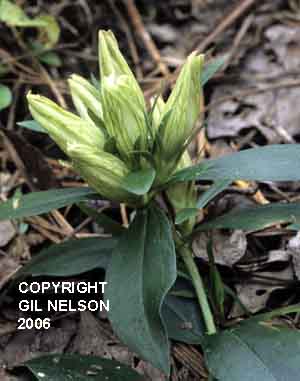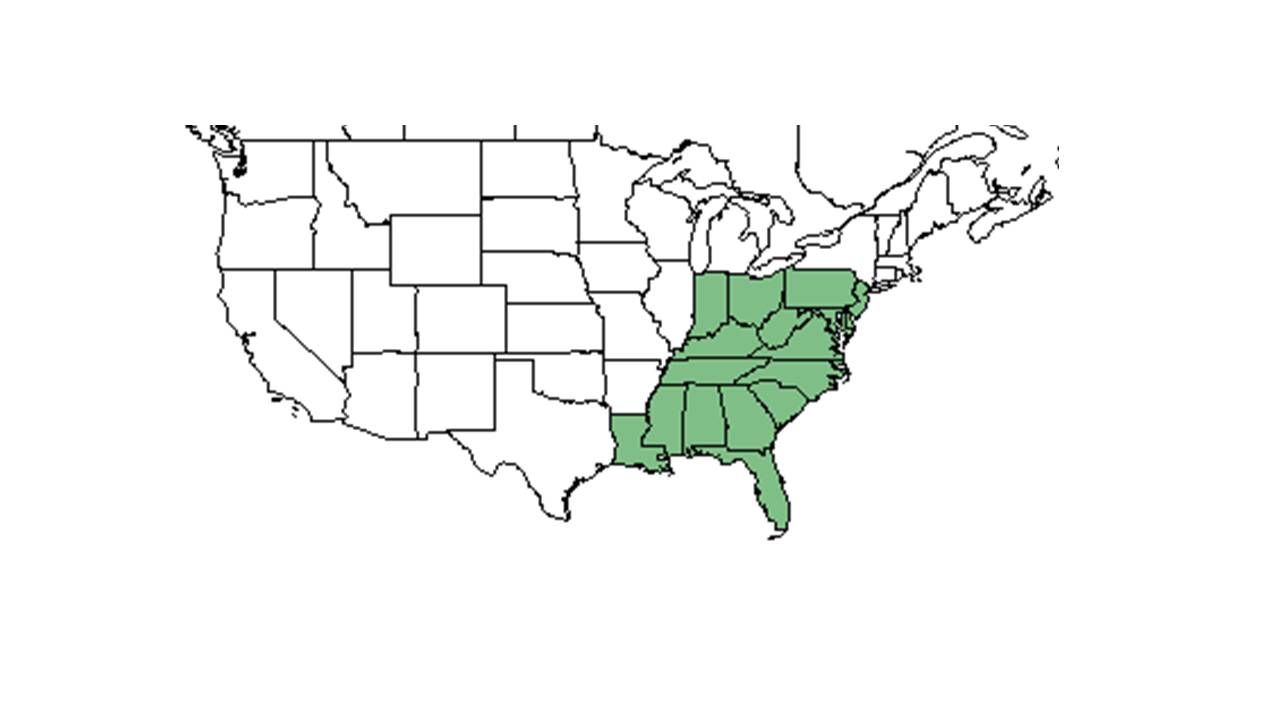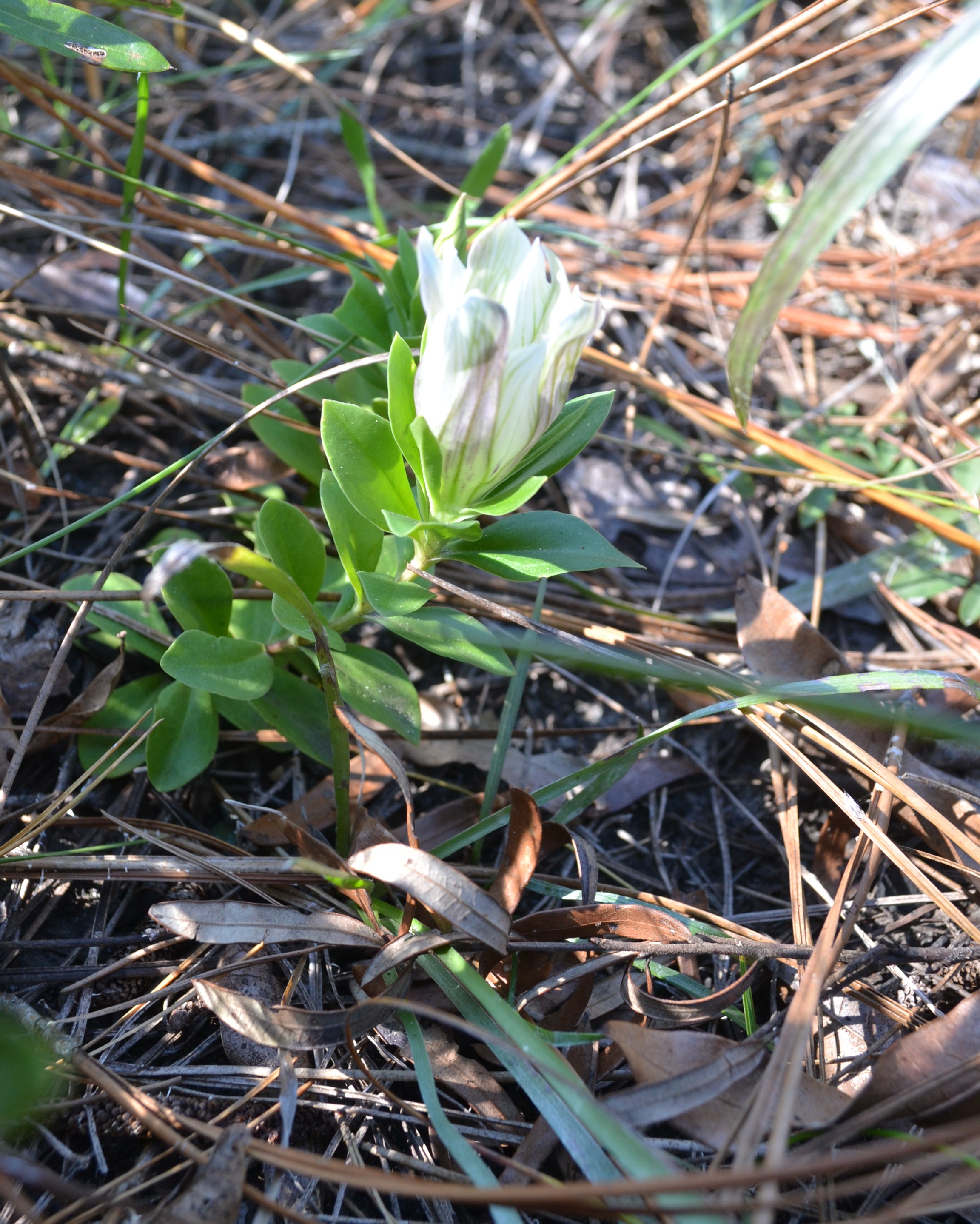Gentiana villosa
| Gentiana villosa | |
|---|---|

| |
| Photo taken by Gil | |
| Scientific classification | |
| Kingdom: | Plantae |
| Division: | Magnoliophyta - Flowering plants |
| Class: | Magnoliopsida – Dicotyledons |
| Order: | Gentianales |
| Family: | Gentianaceae |
| Genus: | Gentiana |
| Species: | G. villosalink title |
| Binomial name | |
| Gentiana villosa L. | |

| |
| Natural range of Gentiana villosa from USDA NRCS Plants Database. | |
Common name: striped gentian
Contents
Taxonomic notes
Synonyms: Dasystephana villosa (Linnaeus) Small; Pneumonanthe villosa (Linnaeus) F.W. Schmidt
Description
"Annual or perennial herbs. Stems erect, teret, often in clumps. Leaves opposite, entire, sessile to short-petiolate. Flowers solitary or in congested cymes, pedicellate or sessile. Calyx 4-5 lobed, tubular; corolla cleft ½ or less its length, campanulate, funnelform or tubular, lobes the same number as the sepals, often connected with a thin tissue (pleats); stamens 4-5, anthers free, or coherent in a ring around the style; stigmas erect, recurved in age, style short or absent. Capsule laterally compressed, elongate, stipitate; seeds 0.6-2.2 mm long." - Radford et al 1964
"Perennial with thick fleshy roots. Stem strict, ascending to erect, 1.5-5 dm tall. Leaves elliptic, 4-8.5 cm long, 1-3 cm wide, acute to obtuse, base attenuate to cuneate, sessile to short-petiolate. Flowers essentially sessile, solitary or in compact, 3-7 flowered cymes. Calyx 2-3.3 cm long, tube 7-13 mm long, lobes linear to narrowly elliptic, 10-20 mm long, to 3 mm wide, acute, erect to ascending; corolla greenish to yellowish white, usually tinted or striped with purple, funnel form, 3-4.2 cm long, tube 2.5-4 cm long, lobes 5, triangular-ovate, the corolla, anther adherent; stigmas spreading-recurved, style 3-5 mm long. Capsules ellipsoid to oblong, laterally compressed, 1.7-2.5 cm long, stipitate; seeds brown, ellipsoid to oblong, faintly reticulate, 1.1-1.3 mm long." - Radford et al 1964
Distribution
Ecology
Habitat
This species can be found in mixed woodlands, secondary, brushy pine-oak upland woods, longleaf pine-turkey oak sand ridges, and hillsides (FSU Herbarium). It has been observed growing in rich, moist, humus in shaded locations (FSU Herbarium). Associated species include Pinus palustris and Quercus laevis (FSU Herbarium).
Phenology
This plant has been observed to flower from October to November (FSU Herbarium).
Seed dispersal
According to Kay Kirkman, a plant ecologist, this species disperses by gravity. [1]
Fire ecology
This plant is found in areas that are annually burned (FSU Herbarium).
Conservation and Management
Cultivation and restoration
Photo Gallery
References and notes
Florida State University Robert K. Godfrey Herbarium database. URL: http://herbarium.bio.fsu.edu. Last accessed: June 2014. Collectors: R.K. Godfrey, J. P. Gillespie, A. F. Clewell, R. Kral, Betty Pierce, Gary R. Knight, Rodie White, Richard R. Clinebell II, and R. Komarek. States and Counties: Florida: Jackson, Leon, Liberty, and Madison. Georgia: Grady and Thomas.
- ↑ Kay Kirkman, unpublished data, 2015.
